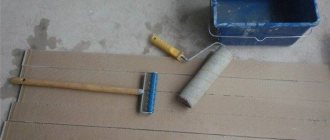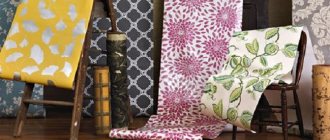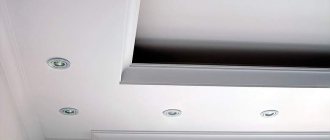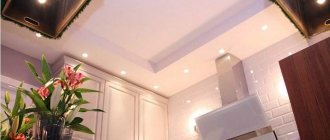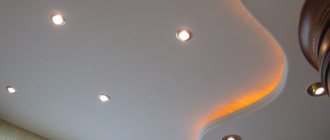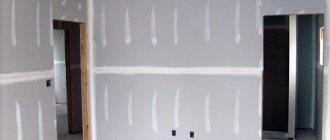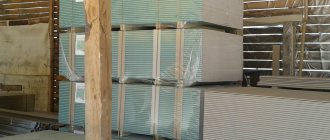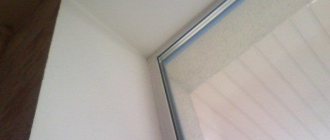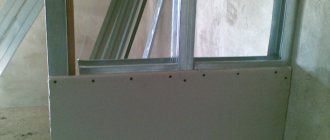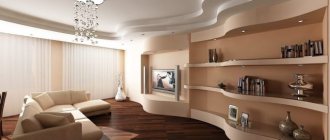Needle roller for self-leveling floor instructions
≡ March 11, 2015 · Category: Construction and repair
Today's roller with needles for self-leveling floors is considered one of the main tools when pouring floors.
It must be used based on the fact that, according to its configuration, the roller is made in a specialized way and spikes (needles) are located on it, as a result of which the finished floor is made strong and uniform.
Self-leveling floors are considered a polymer seamless coating.
The main use of these floors is in the place where it is necessary to comply with hygiene standards.
In implementation, there are self-leveling floors in cans with different elements, which have the same composition, and in order to apply these elements you have to follow a specific technique.
Today, there are more than 10 different color tones. In addition, it is possible to apply additional decoration effects; they are used on finished floors.
These effects are called “chips” - these are fragments of acrylic paint that have colors and different sizes.
As a result, the “chips” applied to the floor will create an effect as if the floor was made from real real material.
This is a very strong and new flooring solution, which many designers are leaning towards these days.
What is a needle roller used for?
In the method of arranging self-leveling floors, the process of rolling the mixture in a liquid state is a condition without which it cannot be done.
This must be done, because when drying occurs, cavities appear in the mixture, which are filled with air.
Plus, this will have a negative effect on the strength of the self-leveling floor. When rolling the mixture, air bubbles are slowly removed, as a result of which the mixture is laid evenly.
Needle rollers, which are intended for self-leveling floors, come in very different sizes, and widths range from 20 cm to 60 cm.
For ease of selection, take a look at the photographs provided.
It is completely natural that working with a wide roller will be more comfortable and faster.
But there are areas in the rooms where it is not possible to work with a large roller. In these cases, you need to purchase a smaller size roller.
On the market of construction materials there are rollers whose stud sizes range from 10 to 40 mm. During the selection itself, you need to know what thickness of the self-leveling coating you want to achieve.
Is it possible to do without it when pouring polymer floors?
If, for example, the mixture is considered to be made on a cement or gypsum base, it is imperative to use a roller with needles. It is again used when pouring polymer-type floors.
In cases with a mixture made on a cement base, the thickness of the self-leveling coating is often important and can reach 30 mm, which means that the roller spikes must be longer.
When a polymer floor is poured, the coating layer in most cases is made to a maximum of 15 mm.
When purchasing them, you need to check with the seller whether the material from which the instrument is made will be resistant to solvents.
How to choose the right roller with needles?
Needle rollers are used for self-leveling floors when rolling a liquid mixture.
By rolling the screed floor mixture, air bubbles are removed and the mixture is laid evenly.
In this video you can get acquainted with this process in detail.
Rolling represents a necessary technical requirement. process when installing a self-leveling floor. If, for example, you do all this, when the mixture dries, cavities appear that are filled with air.
This, in turn, will have a bad effect on the reliability of the floor.
Before you decide on a specific type of roller, you need to determine the thickness of the self-leveling floor you plan to fill in your living space.
Now the cost of a roller with needles for a self-leveling floor is low, and therefore no problems should arise.
Needle rollers are again used if, for example, the mixture is considered to be made on a gypsum or cement base: a mixture of Glims, Bergauf and others, again when using polymer mixtures.
Quite often, in the initial case, the thickness of the self-leveling coating is greater, it can be 30 mm and the spikes of the working roller must be long. When pouring a polymer floor, the coating layer should not be more than 15 mm.
Based on this indicator, you will need to select one or another type of roller.
Before purchasing a roller with needles for a self-leveling floor, you should find out more information about the tool, find out the material of its production and other features.
We think you liked the article - Needle
roller for self-leveling floor - instructions
About important points, pros and cons
Having familiarized ourselves with the functions and purpose of the needle roller, let’s pay attention to a few more important points.
TOP best self-leveling self-leveling floors
How self-leveling floors are poured
We should also talk about the disadvantages of polymer floors. This includes, first of all, the fact that the surface must be seriously prepared. And not only clean it of debris, but also prime it and putty it (if necessary). In addition, the mixture for polymer floors in liquid form is poisonous and toxic - if it gets into your eyes or skin, you will probably need to visit a doctor. Finally, such mixtures are not cheap; the price can reach up to 6,000 rubles per 1 sq. m. m.
The floor must be properly prepared before pouring.
Prices for self-leveling floors "Starateli"
Needle roller for self-leveling floors.
How to make a self-leveling floor with your own hands.
Do-it-yourself shoes for self-leveling floor Foam roller (polyurethane foam).
Thanks to its fine-cell foam structure, polyurethane foam absorbs a lot of paint, gradually releasing it to the surface - this significantly increases productivity, but requires caution: if you press too much on the roller, the paint will simply flow.
One of the serious problems due to the same surface cells was the formation of bubbles in the layer of applied paint - the production solution to the problem was to apply short synthetic pile to the artificial base. Perfect for working with water-based paints
. However, it is very sensitive to organic solvents that corrode the foam surface, and therefore will not last long when working with enamels, varnishes and oil paints.
Roller made of polyamide rope syntax
.
Designed for processing both smooth and uneven, rough surfaces. Suitable for all types of paints and varnishes
, it is particularly resistant to aggressive environments and has a high degree of absorption of paint or varnish. The quality of surface painting is directly proportional to the length of the polyamide pile, varying from 8 to 20 mm.
Polyacrylic roller.
Absorbs well and distributes evenly on surfaces of any type of smoothness, incl. and painting fiberglass, a consumable material for water-based painting or with a limited proportion of aggressive components. Its characteristics are similar to a polyamide roller
, the length of the polyacrylic pile is also different.
Polyester roller.
Polyester is one of the cheapest materials used for the production of fur coats. The cheapness is explained by the fragility and caking of synthetic fiber, and, therefore, the general fragility of the working surface. Used for applying dispersion and acrylic paints
for walls and ceilings, as well as outside the room. It has excellent coloring properties along with wool models.
Velor roller.
Designed for varnishes, waterborne and oil-based paints
always gives excellent results on a flat surface, resistant to solvents. When painting, it absorbs little material, which helps to avoid splashing. Ideal for the final stage of painting and rolling out the top coat.
Flocked roller.
According to its functional characteristics, it is a kind of synthesis of a foam roller and a short-pile roller. Durable, waterproof and environmentally friendly material is perfect for water-based varnishes
, but will be completely damaged by water-based construction paints. As a rule, it is used for fairly smooth, small surface areas.
Fur roller.
Made from natural sheepskin or, as a more exotic option, llama wool, it is suitable for working with any type of paint and for all types of surfaces. Particularly effective when working with oil paints, varnishes and enamels
. It is not recommended to use paints based on slaked lime, which corrodes natural fur.
designed for places that are difficult to reach with a regular roller: concave corners, architectural niches of the room, surfaces of non-uniform height, etc. It is a wheel with a working surface on a handle located at a convenient angle.
Needle roller for self-leveling floors.
Used for working with viscous painting materials and self-leveling floors. A distinctive feature of such a tool is the presence of plastic spikes (needles) on its working surface, which help remove air bubbles
between layers of paint: the solution will lie as smoothly as possible, become durable and will not crack over time. Rolling with a needle roller is technologically necessary if the self-leveling floor contains cement or gypsum.
A drywall roller in the hands of a builder is like an eyelash brush in the hands of a stylist.
This tool is actually quite scary to look at, but also incredibly useful. It is used in construction work to carry out the following tasks: But before you start work, check the table showing the possible bending angle for plasterboard sheets of various thicknesses: A needle roller for plasterboard is generally more reminiscent of an attribute of a torture chamber of the Middle Ages, and even an ordinary one used for applying paint also has its own specific characteristics. But mastery of these two tools will allow you to create miracles with plasterboard sheets no worse than those that stylist masters do with girls’ eyelashes in beauty salons. What should you pay attention to when buying a needle roller?
In fact, there are not very many particularly important criteria, but it is still worth listing them: Multi-level ceilings, niches and arches are created from gypsum plasterboard. But, stop! The sheets themselves have an absolutely even, straight shape, so how can you bend them into an arched structure with your own hands? This is where the needle roller comes into play. Curvilinear plasterboard structures, such as oval shallow niches in the walls, arches or multi-tiered ceilings with rounded elements, look most advantageous and unusual in the interior.
The main difficulty in the manufacture of these elements is the technology of bending plasterboard, and therefore in this article this issue will be covered in as much detail as possible. Please note! In this case, the main thing is to understand the principle by which the design and cladding of curved elements is carried out. If you can handle a fairly simple element, you will subsequently be able to sheathe even the most complex shaped structures.
How to treat the surface → Room decoration → How to choose the right paint → Surface treatment technologies → Leveling and finishing the walls → Selecting and applying a primer → Removal from the surface → Stretch ceilings and technologies → Reviews and testimonials
Liquid wallpaper
Dismantling self-leveling floor
On the building materials market there are 3 offers of liquid wallpaper and a huge number of varieties of rollers. Wallpaper can be: with the addition of cotton, silk and cellulose.
Following the instructions, gluing liquid wallpaper onto drywall is easy. Before applying wallpaper to the surface of drywall, you should putty the fasteners and bring the entire surface to perfection. Next, using a regular roller, the entire area is covered with primer. You need to wait until it dries completely.
A selection of various rollers for applying liquid wallpaper
In the process of applying liquid wallpaper, a figured roller is used. They need to walk up and down in one place 2 times. At the same time, you should monitor the thickness of the wallpaper - no more than 2 mm. Liquid wallpaper dries within 48 hours if the room is well ventilated. There are no seams on this coating. The curved lines and color look elegant and amaze with their individuality.
What is it needed for?
A needle roller is necessary for removing air bubbles from the self-leveling floor, stripping off old wallpaper and bending sheets of drywall. In the first option, it serves as a layer leveler, and the needles pierce air bubbles in the solution.
A self-leveling self-leveling floor spreads and levels well, but without the use of a needle roller, bubbles will remain in it, which will evaporate through the pores over time, and voids will remain, due to which the floor will become brittle, begin to crack and swell.
Laying work
Beacons for self-leveling floors
The preparation of the working solution must be done strictly following the instructions. Be careful and use only as much water as the manufacturer indicates. So the quality of the solution directly depends on this - a solution that is too thin will not create a coating of the required strength, and a thick solution will not spread as it should.
The finished working mixture, prepared using a construction mixer, should be poured out of the bucket in strips. The distance between the strips is from 20 to 30 cm. The gap is needed so that there is room for the mixture to spread.
When pouring self-leveling mortar, it is necessary to level the mortar with rubber spatulas. And be sure to roll the poured mixture with a needle roller, removing air from it. It is better if there are two craftsmen, then one will pour out the solution and process it with a roller, and the second will prepare a new portion in the meantime.
Before laying the flooring, be sure to make sure that the solution is completely dry and only then cut off the excess pieces of damper tape.
Is there an alternative?
Unfortunately, there is no alternative to a needle roller on the modern market. Thanks to the use of this device, the process of installing the coating is noticeably easier and it is possible to achieve a high-quality final result. When pouring, the mixture is first spread using a special spatula, and then rolled with a spiked roller. In short, you can’t do without the tool that this article is devoted to.
Squeegee for self-leveling floor
Decorative putty
Putty rollers are very widely represented on the market. They vary in design, width, and material. Puttying drywall with a roller has many advantages:
- Saving. It takes much less time to cover the surface with putty with a roller than working with a spatula.
- Working with a curved roller is easy; no extra force is required.
- When working with a patterned roller, a beautiful patterned relief is created. Which, after drying, only requires painting.
This is what rollers for decorative drywall putty look like
But there are also disadvantages:
- For decorative relief, special putty solutions should be used.
- There is an overexpenditure of material. To apply putty with a roller, a flat surface of drywall is required. To do this, all fasteners and joints are sealed with ordinary putty.
- The roller does not fit into the corner, so the design should be finalized with a regular spatula.
With all the pros and cons, the use of rollers when working with drywall and its surface after installation is irreplaceable. This saves not only time, but also with the help of these tools you can create unique decorative elements that have several shades of the same color. The video shows the process of puttingtying drywall with a roller.
How to bend drywall without the help of specialists
The question of how to bend drywall interests everyone who is starting to work with this material for the first time. Due to its unique properties, plasterboard is widely used to create a variety of design compositions - round arches, niches, multi-level suspended ceilings. Experts say that this material easily takes the desired shape without losing its qualities. However, many consider this process beyond the capabilities of the home craftsman.
Inflexible at first glance, drywall behaves quite obediently when creating rounded elements with a large radius. To do this, you need to take a sheet of drywall and bend it with a little force, while simultaneously fixing it with self-tapping screws. This method is suitable for any type of gypsum board, provided that the bending radius is at least one meter.
To create curved shapes, it is better to use arched plasterboard, which is specially created for this type of work. Its thickness is 6.5 mm, which provides additional elasticity to the sheet. However, the cost of such material is much higher than usual, and, moreover, due to the relatively small thickness of the sheet, installation of drywall must be carried out in several layers.
There are several ways to bend drywall. The choice of the optimal method depends on the desired radius of the structure and the thickness of the sheet used.
There are some rules with which you can bend not only an arched gypsum board, but also a regular one. In order to give the material a certain shape and maintain the integrity of its surface, you can use one of the proposed methods:
- piercing drywall with a needle roller;
- bending with a knife;
- use of a cutter;
- bending drywall dampened with water.
Each of the proposed methods describes in detail how to bend drywall. It all depends on how small the radius of the structure being built should be. However, when working with drywall, it should be taken into account that it is necessary to bend it only along the length of the sheet, and in no case along the width.
General terms of delivery and pickup
Pickup is carried out at the address
Moscow, 41 km MKAD, shopping center “Melnitsa”, row Zh 5/6.
– when paying on the spot, payment for products occurs before the machine is unloaded (deposit);
– in case of partial or complete refusal of high-quality and paid for products at the time of delivery, the funds are returned to the buyer in proportion to the reduction in the cost of the order;
– when ordering goods according to an individual size or with cutting to an individual size (linoleum, gypsum board, plywood, cable, rolled metal, etc.), 100% prepayment of the order is made, refusal of quality goods sold by the meter, as well as goods manufactured Custom size is not possible;
– delivery is carried out daily from 9-00 to 18-00;
– the cost of delivery does not include unloading, lifting, as well as cutting and sawing of materials;
– unloading time is limited depending on the weight of the cargo;
– delivery is carried out to a place where the car can travel without violating traffic rules and risking damage to the vehicle;
– pick-up is carried out only after prior agreement with the manager of the online store;
– large-sized material (insulation, barrels, etc.) is calculated based on the cubic capacity of the cargo;
– additional requirements for the car, for example, a small height for entering a parking lot or an open body for vertical unloading, are paid additionally: + 25% of the cost of the standard tariff.
| Cargo weight | up to 100 kg | up to 500 kg | up to 1 t. | up to 1.5 t. | up to 2 t. | up to 2.5 t. | up to 3 t. | up to 4 t. | up to 5 t. | up to 7.5 tons with crane-manipulator | up to 10 tons with crane-manipulator |
| Load length | up to 6 m | up to 6 m | up to 6 m | up to 6 m | up to 6 m | up to 6 m | up to 6 m | up to 6 m | up to 6 m | up to 10 m | up to 10 m |
| Moscow within the Moscow Ring Road | 800₽ | 1100₽ | 1500₽ | 1900₽ | 2300₽ | 2700₽ | 3100₽ | 3800₽ | 4800₽ | 6500₽ | 9000₽ |
| Cost of 1 km outside the Moscow Ring Road | 40₽ | 40₽ | 40₽ | 40₽ | 40₽ | 40₽ | 40₽ | 40₽ | 40₽ | 70₽ | 70₽ |
| Standard time for unloading | up to 15 min | up to 15 min | up to 30 min | up to 30 min | up to 45 min | up to 45 min | up to 45 min | up to 1 hour | up to 1 hour | up to 1 hour | up to 1 hour |
| Transport downtime during unloading in 1 hour | 200 | 300 | 300 | 400 | 400 | 400 | 500 | 500 | 500 | 1000 | 1000 |
| Delivery costs may vary due to non-standard conditions, wishes and unloading locations. |
Cost of loading and unloading and lifting to the floor
| Weight | Unloading (with elevator) | Access without elevator (1st floor) |
| up to 300 kg | 2 rub/kg | 2 rub/kg/floor |
| up to 1000 kg | 1.2 rub/kg | 1.2 rub/kg/floor |
| up to 3000 kg | 1.1 rub/kg | 1.1 rub/kg/floor |
| up to 5000 kg | 1 rub/kg | 1 rub/kg/floor |
| from 5000 kg | individually | |
| Bulk product | individually | |
| Drywall/Plywood/Sheet materials | 50 rub/sheet/floor | |
| Profile/Slats/Beams | 30 rub/piece/floor | |
| Insulation | 30 rub/pack/floor | |
| The cost of unloading may vary under non-standard conditions, wishes and unloading locations. |
Multiline phone
Delivery to Russian regions:
– delivery to Russian regions is carried out through the transport company SDEK 2 times a week;
– shipment of goods to the transport company occurs only after 100% payment of the order;
– transport company services are fully paid by the buyer upon receipt;
– for cargo over 10 kg, delivery to SDEK shopping center is 500 rubles.
– return of goods of proper quality through TC is carried out at the expense of the Buyer.
Opening hours:
Monday-Saturday: from 8:00 to 19:00
Soft roller for painting drywall
Rollers for painting drywall come in a variety of pile sizes, lengths and widths. Using a paint roller has a number of advantages:
- Speed. If a wide roller is installed on the roller, it can be used to paint a large square of plasterboard covering in a relatively short time;
- Ease. When working with a roller, no force is required. They are easy to work with;
- Economy. When painting a plasterboard surface with a roller, the paint does not splash in different directions, it is absorbed by the pile, and then evenly distributed over the surface.
But, before buying a roller for painting the surface, you need to understand the length of the pile. Each type of pile is applicable to a specific paint:
- Gloss paint – requires a 4mm nap roller.
- Matte type of paint - you need a roller with a pile of 4 to 8 mm.
- Textured paint – a roller with a long pile of 8 mm or more is required.
The rollers also differ by manufacturer:
| Brand/specifications | Manufacturer country | Pile length, mm | Roller length, mm | Roller radius, mm | Pile base | Pen | Price, rub. |
| ROS 02581 | Russia | 6 | 100 | 31 | polyacrylic | plastic | 90 |
| BISON EXPERT | China | 9 | 180 | 24 | velours | plastic | 236 |
| BISON MOHAIR | China | 4 | 180 | 24 | wool | plastic | 220 |
By choosing a suitable roller, the plasterboard surface can be perfectly painted in a single color scheme.
How to choose?
If you carefully examine the needle roller, it is difficult not to notice the simplicity of its design. However, to choose the right construction device, you need to take certain points into account.
Material of manufacture
Needle rollers are produced from two materials: metal and plastic. Plastic models are more popular. They are not as heavy as metal ones and cost much less. In terms of other characteristics, a plastic product for rolling is no different from metal samples.
However, when buying a PVC roller, you should ask the seller whether this roller will withstand exposure to solvents.
The main advantage of a metal tool is smaller needles, which facilitates deeper penetration into the self-leveling composition.
Other advantages include:
- long service life;
- resistance to chemical reagents.
The advantage of a plastic roller is its low price and light weight. The last factor makes working with this tool easier.
Width
The width of the rollers for leveling the self-leveling floor varies in the range of 15–60 cm. A wide roller is more convenient to use, and the mixture rolls out faster under its weight.
A narrow roller is indispensable in hard-to-reach places. Therefore, it is better to buy several rollers of different widths.
A wide and a narrow roller also have a different scope of purpose. Wide tool suitable for industrial liquid flooring. With its help, you can process a large area of territory in a matter of minutes. The only drawback is poor maneuverability; wide shafts cannot efficiently roll the floor in corners and other hard-to-reach places.
This disadvantage is not present in narrow models. They are flexible and movable; with such models, the surface in the corners is rolled perfectly, however, the time of rolling the bulk composition with narrow rollers increases compared to using wide devices. Typically, such options are used in small rooms or rooms with complex layouts.
Needle length
As a rule, the length of the needles of spiked rollers ranges from 1 to 3.5 centimeters. It is important to consider this criterion before purchasing, since the thickness of the rolled composition is different in different cases, and therefore the length of the tenons cannot be universal. The basic rule when choosing the length of the tenons: it should be greater than the height of the floor leveling mortar.
Rollers with long needles have a protective cover that protects the finished surface from drops of the new mixture. You can also build a protective casing yourself.
The shape of the spikes also varies: in the form of a cone and a drop. The latter, as practice has shown, is not very effective, so experts do not recommend using rollers with this configuration of needles.
Roller handle
The ease of use of the roller depends on the length of the handle - the longer it is, the more comfortable it is for a person to carry out the work of leveling the floor. Before purchasing, you need to carefully inspect the handle and make sure whether it has a seating slot for installing a holder. If the roller is sold with a ready-made holder, it is better to choose the one with a longer holder.
For convenient work, some manufacturers equip the needle roller with a telescopic handle, with which you can effortlessly process a large area of the room. This handle is made of plastic or wood.
DIY self-leveling floor
It’s quite easy to make a self-leveling floor with your own hands. Let's consider the phased implementation of the work.
Surface preparation
To ensure that the created even surface layer does not crack around the perimeter of the room, it is necessary to stick a damper tape, preferably made of foamed polypropylene.
Next, using a level (regular or laser), you need to find the lowest and highest points of the floor base.
From the highest point, you need to mark the height to which you plan to raise the surface - at least 5 mm, and mark on the walls a control line to which the layer of filling the leveling mixture will reach.
Preparing the foundation does not require any special construction skills from you. First, check for holes and cracks. They should be sealed, and all fragile elements should be removed along with debris and dust.
If you have an old vacuum cleaner, it is very advisable to vacuum the surface with it. Then the clean surface must be primed. The primer will take approximately 4 hours to dry.
After this time, you can begin preparing the working solution.
Selecting a dry mix
There are many types of different self-leveling mixtures on the market.
But we must remember that the correct choice of mixture depends on the quality of the floor surface and its service life.
You can take gypsum cement mixtures, for example, Thomsit DG, which harden fairly quickly within 8 hours and can withstand significant loads.
Cement-mineral mixtures are also well suited for self-leveling the floor.
Such mixtures include Polimin LC-2, Siltek F-50, Polirem SPN-511, Ceresit CN 76, F-51, and Atlas SAM 200.
If you want to make a self-leveling floor as a finishing coating or a floor with a 3D effect, or with the subsequent laying of a floor covering such as carpet, laminate, ceramic tiles, linoleum, Ceresit CN 69 is suitable for you. In the case where it is planned to install a heated floor - the best solution would be to use the Ceresit CN 72 mixture together with the elastic emulsion Ceresit CC 83. A wide range of functionality is due to additional modifiers that expand the scope of application of self-leveling solutions.
Laying work
The preparation of the working solution must be done strictly following the instructions.
Be careful and use only as much water as the manufacturer indicates.
So the quality of the solution directly depends on this - a solution that is too thin will not create a coating of the required strength, and a thick solution will not spread as it should.
The finished working mixture, prepared using a construction mixer, should be poured out of the bucket in strips. The distance between the strips is from 20 to 30 cm. The gap is needed so that there is room for the mixture to spread.
When pouring self-leveling mortar, it is necessary to level the mortar with rubber spatulas.
And be sure to roll the poured mixture with a needle roller, removing air from it.
It is better if there are two craftsmen, then one will pour out the solution and process it with a roller, and the second will prepare a new portion in the meantime.
Before laying the flooring, be sure to make sure that the solution is completely dry and only then cut off the excess pieces of damper tape.
Possible problems during installation
While performing installation work, you may encounter some common errors and problems. Let's describe the most common ones.
The solution does not spread
Don't be surprised if the solution you just poured onto the floor doesn't spread 100% on its own.
The fact is that it should not spread completely on its own - it needs help.
To do this, use special available tools, including: a needle roller, a rule, a spatula, a rule and other convenient means.
Incorrect needle roller
Remember that in a needle roller, in this case, the most important thing is not its needles, but their length.
If you use a roller with needles that are too high, the roller will only expel air from the mixture and will not move the mixture itself.
In this regard, you should choose a needle roller such that the height of its needles is only 1-2 mm above the filling level.
The floor flows over the threshold
Although the threshold seems quite high and impregnable to you, you still need to make a barrier and take care of it before you start pouring the floor.
Is it possible to fill a 1cm screed with self-leveling agent without a roller?
plz tell me. you need to fill 3 square meters of warm loggia floor with a 1cm layer of self-leveling compound, but there is no roller. Is it possible to do without it? under the tiles, evenness is not important, the main thing is to hide the thermal floor.
you can fill it. but pour it with good evenness and smoothness - only an expensive mixture can be poured.
telephone
Under the tiles, evenness is essential. You can disperse it with a spatula, only the TP may be damaged.
Berg wrote: please tell me. you need to fill 3 square meters of warm loggia floor with a 1cm layer of self-leveling compound, but there is no roller. Is it possible to do without it? under the tiles, evenness is not important, the main thing is to hide the thermal floor.
C2h5-OH wrote: you can fill it. but pour it with good evenness and smoothness - only an expensive mixture can be poured.
Or will you get a very curved surface without a roller? Maybe you can use something at hand instead of it.
Berg wrote: please tell me. you need to fill 3 square meters of warm loggia floor with a 1cm layer of self-leveling compound, but there is no roller. Is it possible to do without it? under the tiles, evenness is not important, the main thing is to hide the thermal floor.
which brush exactly? I have little idea about the process. Does it work with a roller, but how does it work with a brush? Maslovitsa is unlikely to work.
telephone
No, no, be sure to speed it up, especially in the corners.
. bayoneted
Evgeniy78 wrote: but for your three squares, just pour according to the instructions, it will spread on its own
Oh well. and the air will come out on its own, including from under the cable
thanks to all. the floor was flooded. Another question for practitioners.
Unlike a regular screed, this self-leveling mixture smears quite well after 1 week of drying. like chalk. in some places, as I understand it, there is a scab left from the milk... removing it with a spatula is not a problem, but almost the entire surface is smeared. a cement-based mixture, okay, gypsum would be logical.
In general, tell me whether priming well is enough or whether something else needs to be sanded. Otherwise I’ll have to make a decision about laying the tiles tomorrow
what is the wailing wall in jerusalem
Source
Using a needle roller we arrange self-leveling floors correctly
Laying self-leveling floors requires competent work with many tools, including a needle roller. Without it, it is simply impossible to obtain a beautiful, strong and durable floor covering. So what is so special about this roller?
Why do you need a roller for self-leveling flooring?
The main purpose of such a roller is to roll the liquid mixture of the self-leveling floor. This procedure allows you to effectively eliminate the slightest air bubbles from it. As a result of simple manipulations, you will receive a smooth and evenly laid coating.
Such rolling is especially important because a large number of air bubbles in the frozen mixture means a high degree of porosity, which leads to early destruction of the coating and its wear. Thus, rolling is an integral stage of self-leveling coating technology that cannot be skipped.
A poorly laid mixture can negate all efforts to furnish a living space. It is worth remembering that you will be placing furniture on the surface that is quite heavy on its own without your weight. That is why it is important to lay the floors as correctly as possible, which a special roller will help with.
Thus, rolling is an integral stage of self-leveling coating technology that cannot be skipped. A poorly laid mixture can negate all efforts to furnish a living space. It is worth remembering that you will be placing furniture on the surface that is quite heavy on its own without your weight
That is why it is important to lay the floors as correctly as possible, which a special roller will help with.
Needle roller - what kind of “beast” is this?
A modern needle roller is a tool for finishing finishing work. Today it is customary to distinguish several main types of it - for working with plasterboard and self-leveling floors. The base of the product is covered with a needle-shaped cover and mounted on a working handle.
As a rule, such a tool is made of plastic or metal. The metal needle roller is obviously heavier than its plastic counterpart, and it is intended for working over large areas.
Most manufacturers of tools of this type provide a universal handle into which a telescopic extension can be easily inserted. It creates maximum convenience in working with bulk mixtures, saving you from unnecessary effort. Both the handle and the extension cord itself can be made of wood or plastic. Among other things, needle-type rollers differ in the thickness and length of the needles. How to make the right choice?
Needle roller for self-leveling floor – how to choose?
Choosing the right tool is already one third of quality work
So, when choosing a needle roller for a self-leveling floor, first of all you need to pay attention to the length of its needles, which should be slightly greater than the thickness of the layer of self-leveling mixture. As a rule, you can easily find products with needle lengths from 8 to 35 mm on sale.
However, if the thickness of your floor is less than 5 mm, then it is recommended to choose a roller with sharp (not rounded) needles. This tool is used when working with mixtures on a wide variety of bases - gypsum, polymer, cement.
Obviously, the thickness of a cement or gypsum floor will be greater than the thickness of a polymer floor, so the rollers for working with them must be larger - from 30 mm.
Another selection criterion is the width of the product. Usually it ranges from 20-60 cm. Practice shows that the larger the width of the roller, the more convenient it is to work on large areas, however, hard-to-reach places can be found in every living room.
It is in them that it will be problematic to work with such a tool, so it is better to opt for a small or medium-sized product. Of course, the work will take more time, but you will be confident in the quality of the result. When purchasing a roller with needles, ask the seller how resistant it is to aggressive environments, in particular to solvents.
Covering curved surfaces with plasterboard
Materials and tools
To cover curved surfaces with plasterboard we will need:
Devices for bending drywall strips
- Drywall . It is better to take not standard, 12 mm thick, but restoration plasterboard. Its thickness is 8 mm, making it bend much easier.
- Metal profiles for drywall.
- Fasteners (anchor bolts and self-tapping screws).
- Putty and other finishing materials.
Among the tools we should have:
- Hammer.
- Drywall screwdriver.
- Drywall stop bit (used to prevent damage to drywall when fastening).
- Needle roller for rolling strips of drywall.
- Knife or saw with fine teeth.
- Measuring tools.
Bit with limiter
Curved surface frame
The basis of any plasterboard structure is its frame. Wooden blocks of small thickness can be used for the frame, but most often the drywall is mounted on a special profile made of galvanized steel.
The sequence of installation of frame elements depends on what exactly we will do - a niche, an arch or a ceiling element. This article provides instructions for installing a plasterboard arch with your own hands, since it allows you to clearly demonstrate the features of covering non-rectilinear surfaces using a simple example.
Note! In this case, the main thing is to understand the principle by which the design and cladding of curved elements is carried out. If you can handle a fairly simple element, you will subsequently be able to sheathe even the most complex shaped structures.
We install the frame as follows:
- First, we attach the starting profile to the walls of the doorway . For fastening we use anchor bolts with metal and plastic sleeves.
- Then, from a segment of the starting profile, we make the arc part of the arch . To bend the starting profile, we make several cuts on it using metal scissors.
Profile cutting for a curved frame
Advice! If the starting profile bends along the inner radius, then the cuts on its edges should have a triangular shape. For the outer radius, you can make straight cuts.
- We attach the two arc parts of the arch to the frame along the edges of the doorway (as shown in the photo).
Which is better: heated floors or radiators?
Warm floorBatteries
Arc part of the arch
- To give our structure rigidity, we connect the arc parts with transverse sections of the profile. When connecting, it is necessary to ensure that the edges of the profile do not protrude beyond the plane of the arch.
The frame of our future structure is ready - it’s time to start covering it.
Covering the frame with curved plasterboard
Bending drywall is quite a difficult task, so it is better to sheathe straight sections first. To do this, we cut out sheets of drywall of the shape we need, apply it to the frame and fix it with self-tapping screws. This is where a drywall bit with a limiter comes in handy - it will not allow the excessive force of the screwdriver to break through the cardboard layer.
After all straight surfaces are sheathed, we begin to bend the drywall:
- First, we cut out a strip of drywall of the size we need. We process the edges of the strip with a special plane so that the end of our arch is as smooth as possible.
- Then we lay the strip of drywall on a clean, flat surface with the wrong side up and moisten it with water. You need to wet it sparingly - so that the moisture does not saturate the drywall through and through.
Rolling strips of drywall with a needle roller
- After the drywall is moistened, take a drywall roller and roll it over the entire surface of the strip. The points of the roller needles should pierce the cardboard layer and go several mm into the core of the sheet.
Advice! To ensure the best possible bending, the sheet of drywall needs to be bent across, not lengthwise. Also, you should not use moisture-resistant drywall, since it practically does not get wet and, as a result, bends poorly.
- After rolling the drywall with a roller, wait a few minutes for water to get into the punctures and be absorbed into the gypsum filler. The drywall, which has become relatively elastic, is bent to the radius we need and fixed.
The prepared drywall needs to be bent and fixed
Surface preparation
To ensure that the created even surface layer does not crack around the perimeter of the room, it is necessary to stick a damper tape, preferably made of foamed polypropylene. Next, using a level (regular or laser), you need to find the lowest and highest points of the floor base. From the highest point, you need to mark the height to which you plan to raise the surface - at least 5 mm, and mark on the walls a control line to which the layer of filling the leveling mixture will reach.
Preparing the foundation does not require any special construction skills from you. First, check for holes and cracks. They should be sealed, and all fragile elements should be removed along with debris and dust. If you have an old vacuum cleaner, it is very advisable to vacuum the surface with it. Then the clean surface must be primed. The primer will take approximately 4 hours to dry. After this time, you can begin preparing the working solution.
Self-leveling floor with your own hands brings the following surprises
Self-leveling mixture does not spread
Imagine my surprise when I saw that my self-spreading mixture did not spread 100 percent on its own. That is, the mixture spread, but not completely.
I, it seems, acted according to the instructions and did everything as the seller told me, who, according to him, is an experienced builder. But no miracle happened. The correct answer was precisely that the mixture does not have to spread on its own - it needs help. Help must be provided with special and available means. Among the special ones is a needle roller, and among the improvised ones - anything: a stick, a rule, a spatula and any other homemade products.
Not enough hands
It dawned on me that I need to go into the mixture with armed hands. I'm trying to level with the means at hand. Everything would be fine, but I can’t reach the wall and the corner.
I hoped that my active actions would move the mixture and it would reach the cherished boundaries of the room by gravity. Unfortunately, this did not happen, after complete drying, my self-leveling floor turned out to be slightly underfilled to the corners, or rather to one, that very first corner...
All of the above happened because the puddle of the mixture was spilled far from the corner of the room and one batch was simply not enough to cover the desired area.
Incorrect needle roller
The instructions for the mixture indicated that it was the needle roller that was intended to level and distribute the self-leveling mass over the floor. I bought a wonderful new roller with nice long needles, but it didn't do the job. What's the matter? Defective roller? It turns out that the main thing in a needle roller is not so much the needles, but their length.
If the needles are too high, the roller will only expel air from the mixture, and the mixture itself will not move. If the size of the needles is close to the pouring depth, then the non-needle core of the roller will evenly roll the mixture over the floor, smoothing it over the surface, automatically squeezing out air bubbles. A roller with short needles will move the mixture too actively and is not suitable for filling the floor. Hence the summary - choose a needle roller with a needle height 1-2 mm above the pouring level.
In those areas where I tried to frantically drag the mixture across the floor surface with an incorrectly selected needle roller, only these marks remained. Ugly, of course, but through the linoleum, it’s imperceptible to the touch.
Self-leveling floor leaks over the threshold
The problem has been solved, now we work with a rule, a spatula, and a roller. The last batch and again trouble... The mixture rushed over the threshold, which before the start of work seemed high and impregnable. Everything is learned by comparison, and relatively quickly it turned out that our floor had reached the desired level and was now becoming equal to the threshold of the neighboring room. Everything is great, but the mixture begins to flow out. We urgently build a barrier. It is advisable to take care of the barrier technological threshold before starting to pour the self-leveling floor.
Leveled, but not leveled
When everything was dry, joy knew no bounds. The floor turned out much better than we could have imagined. Smooth - like a table! Yes. It was worth all the effort to tackle the self-leveling floor yourself.
But a small fly in the ointment still appeared in our ointment. The mound in the middle of the room was not completely hidden under the mixture. It was covered with a thin and even layer, like a glazed gingerbread. From a distance this flaw is almost invisible, but a residue remains. A minor mistake was made; we did not measure the floor heights. It turns out that initially the floor was crooked by more than 3 mm. This means that when leveling the floor with self-leveling mixtures, you need to take into account the height difference.
Where to buy?
Such a roller can be purchased at any hardware store. It can be inspected, touched, as they say, checked for defects and manufacturing defects. This is the best option for novice craftsmen who have no experience and cannot choose the appropriate device without qualified help.
There are cheap models on construction markets, but the products here are usually not of good quality. But low prices make it possible to buy several rollers at once, and if one of them does not fit, it can be replaced with another.
Give preference to quality tools
But people who know exactly what model of roller they need, from what manufacturer and from what material can safely buy a tool in an online store. Then you won’t even have to leave home to purchase the required roller.
Another option is to save money and try to make such a roller yourself.
Video - DIY needle roller
DIY needle roller
You can make a drywall roller yourself. There is nothing complicated about this:
- You need to take a board up to 2 cm thick, and treat its width up to 18 cm to remove burrs.
- On the edge of the board, along the entire width, you need to apply a grid of 1 cm by 1 cm with a pencil, it will be approximately 7 cm high and 15 cm wide.
- Holes smaller than 1 diameter should be made on the resulting crosses.
- After this, using a screwdriver or screwdriver, screw a regular drywall screw (it has a needle-like tip) into each hole.
- To prevent the board from coming apart, you should screw in the screws carefully and not “tighten” them too much.
- Upon completion of the work, the almost half-sharp ends of the screws (tenons) will be visible on the back side of the board.
- Next, take a 15x15 wooden beam. 3 holes are drilled in it with a 4 mm drill, right through.
- Long screws will be required. When they enter the holes of the beam, they should look out 1.5 cm.
- In order for the screws to be longer than the beam, you need to use a 10 drill to deepen the holes in the beam by 1.5 cm.
- The finished timber, with inserted screws, should be attached to the board, from the side of the screw heads. This will be the handle.
- In order to prevent the screws from getting on the caps, you should lift the beam and look where the screws will go in (the places are marked with red dots in the diagram).
- After attaching the handle to the base, the board should be cut slightly below the working surface.
The needle base is ready for use on the surface of drywall.
see also
Comments 27
Recently we poured it with Zhinka and my eldest daughter - the three of us are most convenient: I carry it, Zhinka kneads it, my daughter pours the mixture. We worked with two drills (so that we had time to cool down), and poured it out of the bag with a ladle. Pour the mixture into the water! And not vice versa. Two hours, 9 bags, 18 m2 with a difference from 2 to 18 mm.
When pouring, it is necessary to install either beacons or a laser. A very good option is to apply a met profile or something like that to the tile adhesive. And the rule is already applied to the iron. And so - with small differences in the floor - up to 1 cm, you can first, with the rule, crawl through the floor perpendicular to the direction of the laminate, highlight the areas of failure and locally level the floor with a pourer. Pre-prime 2 times. One of the advantages is low floor consumption. Of the minuses - a lot of hemorrhoids. As an example, a hall of 24 sqm. 12 bags. Raised the floor by 5 mm. Afterwards, there were still influxes (a little). Conclusion - it’s difficult without beacons...
Just wondering why everyone is trying to release something that hardens quickly. Once I filled it with regular one, the result was much better than that of the quickly hardening one.
I’m not the only one working - and because of this, after 6 hours you can walk
Let me add, colleagues. Two men need to fill it! I flooded three rooms. My wife helped. She helped by holding the perf when I poured the mixture, and then poured fresh water into the bucket. Overall it turned out tolerable, but with an assistant it would have been perfect!
I filled my kitchen (18 square meters) and the entrance corridor (4.5 square meters). It took 10 bags. We worked together with my father - he kneaded with a mixer, I leveled. Half an hour of work and everything is ready. A day later I was already walking on the smooth floor...
Good job! Coming soon too! What brand of mixture? And what is the area of the room?!
GF 177 For hall 14.4 plus corridor 11.9 - 11 bags of 25 kg
I’ll add on my own behalf: the work must be done by two people - one levels, the other kneads... And to avoid bubbles, mix with a mixer at low speed...
The two of us did it - I knew I’d forget something, the filling had to be continuous
And I easily wiped off the splashes from the wall with sandpaper...
Look carefully - it doesn’t come off, I tried sanding it.
I poured the same rolled oats, only for a heated floor - the next day I cleaned up the splashes with sandpaper and a block without any problems. But I had splashes and not smudges...
I’ll add on my own behalf: the work must be done by two people - one levels, the other kneads... And to avoid bubbles, mix with a mixer at low speed...
I agree, and I’ll also add that it’s better to stir 2 bags at a time in a basin, otherwise you’re stirring in a bucket like this and when you reach the desired level, everything will settle from below and you’ll be lifting up the loam from the bottom like a hedgehog, but this, of course, applies more to large layers from 2 cm and above)
